THE
REPUBLIC AND HER HOLY CROWN
According to the first law of the Republic of Hungary in
the year 2000, the Holy Crown of St. Stephen is to be kept
in the Parliament. Thus on 1 January, 2000 the republican
translation of royal insignia came true: the crown together
with the sceptre and the orb were taken in a procession
from the National Museum to the building of the Parliament.
Although the original plan of a complete perambulation
of the crown in Hungary was finally abandoned, on 15 August
2001 it still travelled upriver, patrolled by the monitors
of the Hungarian Danube Fleet, to Esztergom, where it was
received by leaders of the state and the governing parties,
with whom it participated in a Mass celebrated in the Basilica.
Apart from its travels, the crown was also the object of
several state-financed monuments and works of art including
the motion picture Sacra Corona and numberless statues
erected in public places. In 2001, a large-scale copy of
the crown also figured as a monumental decoration of the
Chain Bridge during the national-religious feast of 20
August. Parallel to its official political exploitation,
various occult theories about the crown appeared in printed
or electronic format, along with crown-related collectibles. |
|
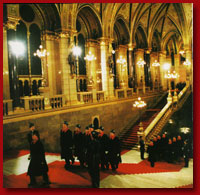 |
 |
|
 |
|
|
 |
|
|
|
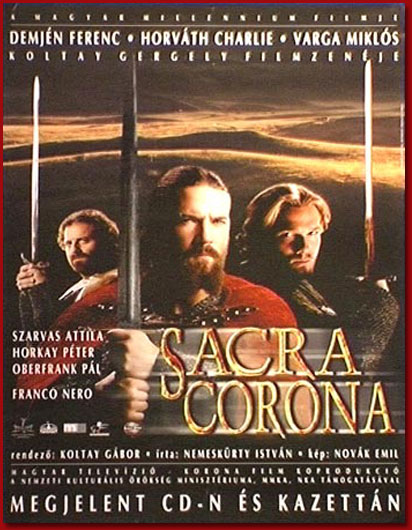 |
 |
|
|
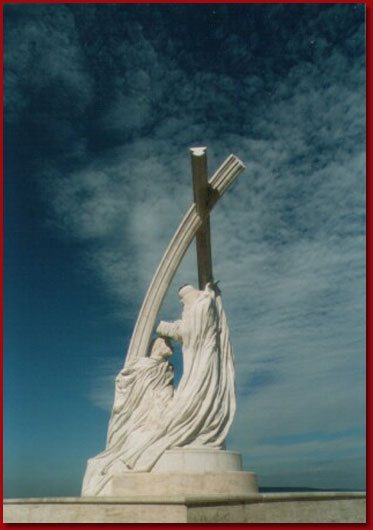 |
MILLENNIAL SAINT STEPHEN STATUES
In 2000, during the state-sponsored Millennial celebration, Hungarian villages and towns erected nearly 300 monuments on topics from Hungarian history. Saint Stephen (1000-1038) proved the most popular historical subject; altogether 67 new monuments were dedicated to him. Another popular motif was the legend of the miraculous stag that led the ancient Hungarians to their present homeland, and numerous other statues depicted medieval saints and kings. There were very few modern historical subjects.
Link to the Hungarian Millenary exhibition: http://www.archivum.ws/galeria/katalogus/2001/millennium/virtual/index_tem.html |
|
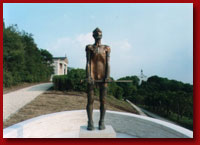 |
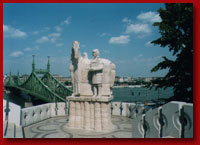 |
|
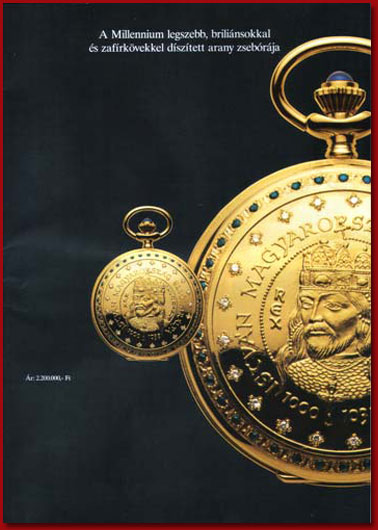 |
 |
|
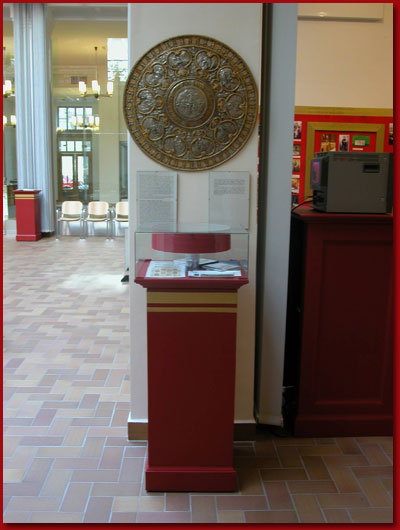 |
COMMEMORATIVE MILLENNIAL SHIELD
ÁRPÁD'S SHIELD
Mór Wisinger, a Budapest goldsmith, created Árpád`s Shield for the millennial ceremonies of 1896. The shield was inspired by a Greek myth: In order to honor Achilles on his departure for the Trojan War, Hephaestus, the god of smiths, forged a shield of consummate beauty and craftsmanship on which was depicted the heavens and the earth and the eternally flowing ocean...
The commemorative Millennial Shield is made of red copper and is 67 centimeters in diameter. It consists of four "rings". Its inner part was originally a standard disc with a gilt border. The outer ring shows the coats of arms of fifty of the counties of the historical Hungarian Kingdom. The names of the counties are written on the scroll-bands on the escutcheons. On the wider second ring ten scenes from the thousand-year Hungarian history are shown. These scenes depict loyalty to the dynasty and are marked by strong Catholic overtones:
1. The Baptism of Vajk (St. Stephen)
2. The Statutes of St. Ladislav
3. Colman the Bibliophile forbids the burning of witches
4. The Foundation of the university in Óbuda (1395)
5. Mathias Hunyadi among his scholars
6. Pope Innocent XI signs the Charter of the Holy League, founded for rolling back the Turks
7. Eugene of Savoy retakes the castle of Buda from the Turks
8. "Our Life and Blood!" The Hungarian nobility offers help to Maria Theresa
9. Leopold II makes peace with the Hungarian nobility
10. The coronation of Franz Joseph, with the Chain Bridge in the background and various notables in the front.
The inscription on the third ring reads as follows: "To commemorate the first thousand years of the Hungarian State 1896". On the inner ring Árpád is shown being raised on a shield by the chiefs of the conquering Hungarian tribes in acknowledgment of his supreme right to leadership.
Only a few of the commemorative Millennial Shields survived the world wars. The original one which this example is based was found in the attic of a house in Leányfalu. The exhibited copy was made by Csaba Károly Nyers and Balázs Vajda using the galvano-plastic technique. |
|
|